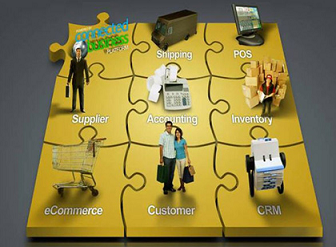With the existing new technologies and innovations emerging every other day, the information technology is an increasingly interesting platform not just for developers, but also for all sorts of non-technical common people. With the need for making things easier in the daily life and with the technological advancements, more and more daily activities are shifting online. Having said this, the web can be a very useful tool as well as an intimidating proposition at the same time. Computer based technology and information systems are actually quite large and vast spread in their utility, have broader spectrum and details. For instance when anyone uses the web for browsing, sending or receiving e-mails, playing online games or even sharing multimedia files with others, all the data has to pass through a set of complicated networks and soft-wares. There are many processes involved that are responsible for management of such systems. The prime […]
Communication satellite
Communications satellite is an artificial satellite stationed in space for the purpose of telecommunications. Modern communications satellites use a variety of orbits including geostationary orbits, Molniya orbits, other elliptical orbits and low (polar and non-polar) Earth orbits. For fixed (point-to-point) services, communications satellites provide a microwave radio relay technology complementary to that of communication cables. They are also used for mobile applications such as communications to ships, vehicles, planes and hand-held terminals, and for TV and radio broadcasting, for which application of other technologies, such as cable television, is impractical or impossible A satellite in a geostationary orbit appears to be in a fixed position to an earth-based observer. A geostationary satellite revolves around the earth at the same angular velocity of the earth itself, 360 degrees every 24 hours in an equatorial orbit, and therefore it seems to be in a fixed position over the equator. The launch of […]
Various Forms of Feedback in Mass Communication
Feed back In its simplest form the feedback principle means that a behavior is tested with reference to its result and success or failure of this result influences the future behavior Though not exactly cut-out for human communication, the Shannon-Weaver model provides clear guidelines for researchers to mark more avenues for graphic presentation of the elements in daily human communication. Forms of feed back There are five main categories of feedback. They are listed in the order in which they occur most frequently in daily conversations. 1. Evaluation Making a judgment about the worth, goodness, or appropriateness of the sender’s statement. 2. Interpretation Paraphrasing – attempting to explain what the sender’s statement means. 3. Support Attempting to assist or support the sender. 4. Probing Attempting to gain additional information, continue the discussion, or clarify a point. 5. Understanding Attempting to discover completely what the sender means by his/her statement. Role […]
Five news stories that appeared in Urdu newspapers Translated in English
News Story No. 1 The Network for Consumer Protection has expressed concern at the dramatic increase in sugar price and alleged that sugar barons having clout in the government have created an artificial shortage. Sugar price has surged to an all-time high of Rs120 per kg in a week from Rs85 on Oct 31, proving that the government has miserably failed to keep a check on food prices and provide relief to consumers, a press release issued by the organisation said on Tuesday. Its executive coordinator, Dr Arif Azad, said roots of the problem lay in the sugar lobby’s political clout in determining sugar output, timing of import and scaremongering about rises in prices. “For the sake of protecting consumers from artificially inflated sugar price rises, the government has to bring in regulatory measures to rein in the power of sugar lobby,” he said. He called for an investigation to […]
Uses and Gratifications Approach
Uses and Gratifications One influential tradition in media research is referred to as ‘uses and gratifications’ (occasionally ‘needs and gratifications’). This approach focuses on why people use particular media rather than on content. In contrast to the concern of the ‘media effects’ tradition with ‘what media do to people’ (which assumes a homogeneous mass audience and a ‘hypodermic’ view of media), U & G can be seen as part of a broader trend amongst media researchers which is more concerned with ‘what people do with media’, allowing for a variety of responses and interpretations. However, some commentators have argued that gratifications could also be seen as effects: e.g. thrillers are likely to generate very similar responses amongst most viewers. And who could say that they never watch more TV than they had intended to? Watching TV helps to shape audience needs and expectations. U & G arose originally in the 1940s and underwent a revival […]
Five news stories
News Story No. 1 The Network for Consumer Protection has expressed concern at the dramatic increase in sugar price and alleged that sugar barons having clout in the government have created an artificial shortage. Sugar price has surged to an all-time high of Rs120 per kg in a week from Rs85 on Oct 31, proving that the government has miserably failed to keep a check on food prices and provide relief to consumers, a press release issued by the organisation said on Tuesday. Its executive coordinator, Dr Arif Azad, said roots of the problem lay in the sugar lobby’s political clout in determining sugar output, timing of import and scaremongering about rises in prices. “For the sake of protecting consumers from artificially inflated sugar price rises, the government has to bring in regulatory measures to rein in the power of sugar lobby,” he said. He called for an investigation to […]
